HomeFeaturesRoots Of Yggdrasil
Roots Of Yggdrasil’s gorgeous roguelike citybuilding is a real growerIt’s heading to early access on January 24th
It’s heading to early access on January 24th
Image credit:ManaVoid Entertainment/Indie Asylum
Image credit:ManaVoid Entertainment/Indie Asylum
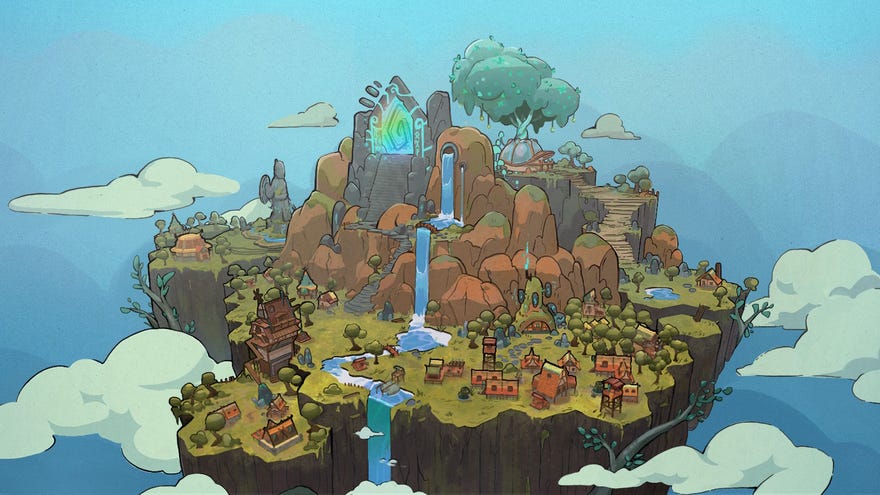
Back in the depths of 2023’s February Steam Next Fest,Roots Of Yggdrasilwas one of a handful of games that really caught my attention. Not because it was another beautiful-looking deckbuilder (though that does seem to be a steadily growing niche of mine these days), or because its colourful, inkwash visuals had the air of aNorse-flavoured Okami about them(though it did also help). Rather, it was the way its roguelike foundations meshed with its freeform, but still very goal-driven turn-based building systems, giving you drive and purpose in your construction choices, while also being light and chill, with just the right amount of existential threat nipping at your heels.
It struck me that if, say, my best puzzlestrategybudDorfromantikwas ever turned into a roguelike, this is probably a good approximation of what it would look and feel like, which is, frankly, yep, I’d like that game right now, please. Happily, with Roots Of Yggdrasil now approaching its early access launch on January 24th, I’m very happy to report that it’s come on leaps and bounds since that Next Fest demo. This is already a very moreish and polishedbuilding game, and I’ve been struggling to tear myself away from it as I guide my longboat of magic Vikings away from their impending Ragnarok.
Image credit:Rock Paper Shotgun/ManaVoid Entertainment
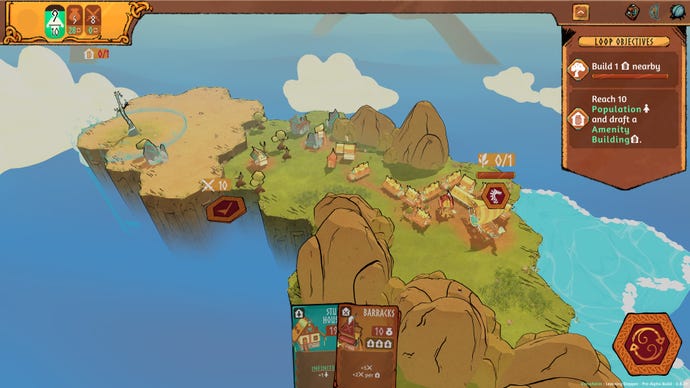
The UI in particular has had a major overhaul since the Next Fest demo, and it’s now much easier to see how all your supplies, might and eitr are being replenished each turn. |Image credit:Rock Paper Shotgun/ManaVoid Entertainment
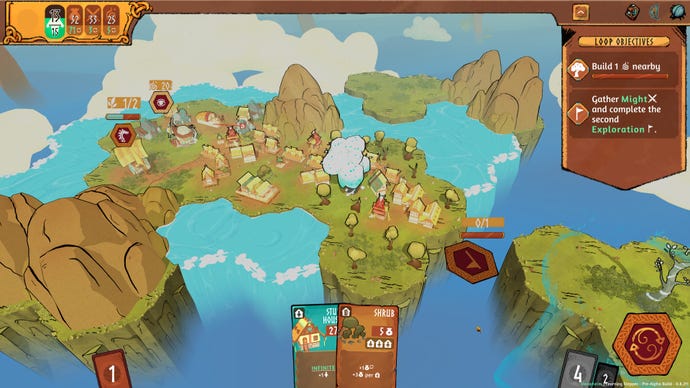
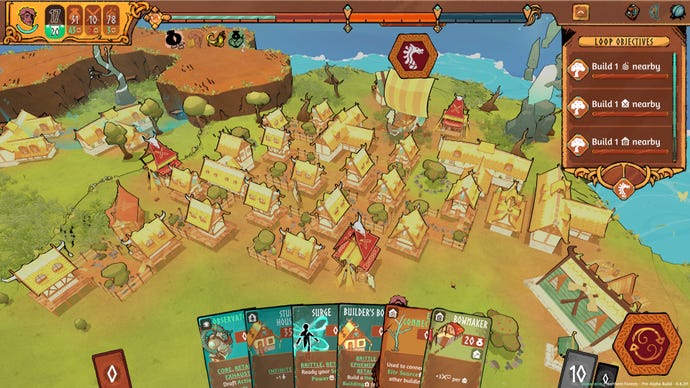
You’ve only got a set number of turns to grab your seed stash, however, and the more time you spend on an island, the more unstable the landscape becomes. The timeline bar across the top signals when certain “events” will start happening, but you don’t know what they’re going to be until they happen. During my time with the early access build so far, these have ranged from flooded tiles to thick, nasty brambles that I need to get rid of, and even storms that gradually cruise across the map, stopping you from building on affected tiles.
Story events also crop up randomly on the map, adding an extra frisson of tension to your citybuilding strategising. |Image credit:Rock Paper Shotgun/ManaVoid Entertainment
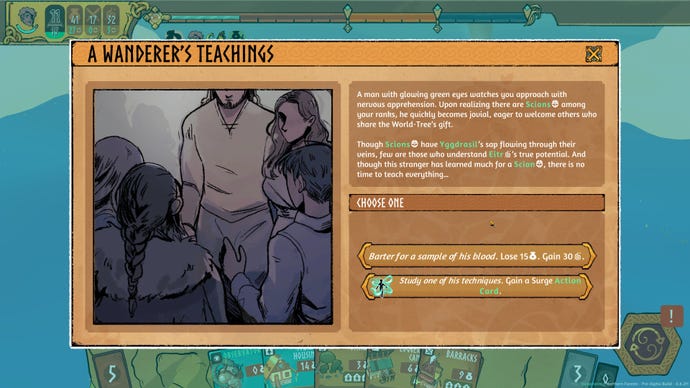
As you move up the map (left), you’ll see “The Gap” slowly build up behind you, but upon death, you’ll always end up back at The Holt (right) for another go. |Image credit:Rock Paper Shotgun/ManaVoid Entertainment
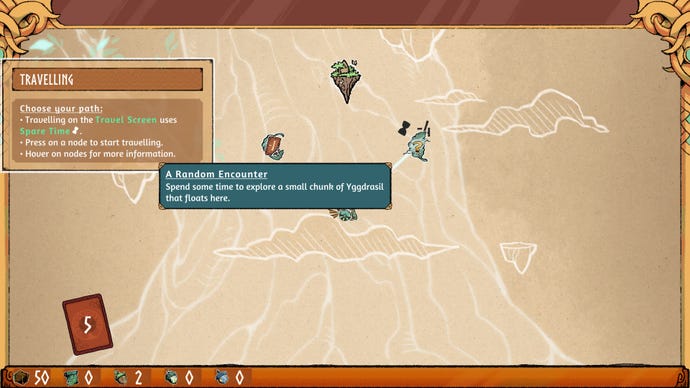
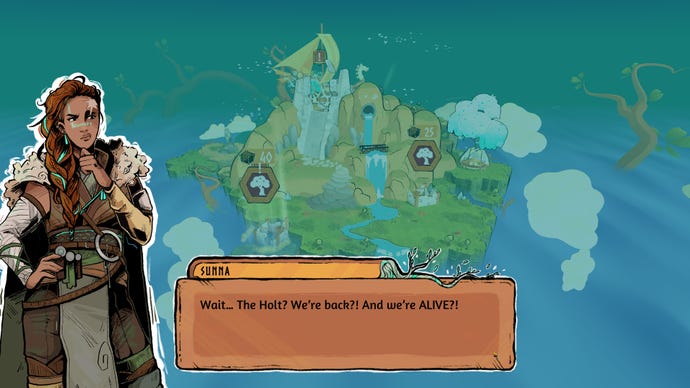
It’s a winning formula, and one that really makes you think about the placement of your buildings. For instance, you can’t just lay down two Waterwells within range of each other to double up on the initial bonus you gained. They’ve got to have their own distinct catchment areas. Likewise, any bonuses you might get to help bolster your Supply, Might or magical Eitr reserves can only be gained from buildings already on the map,notthe ones that are built near it afterwards. As such, the order in which you play your cards is important, as you might miss out on a vital multiplier otherwise. At the same time, though, you’ve only got so many supplies you can spend on buildings per turn, and so maximising your hand and keeping your population growing quickly becomes quite the satisfying juggling act. Best of all, you get to decide where all of your buildings go, too, as you can drag and drop them onto the map with your mouse, and fiddle about with their pixel-perfect locations to get their bonus rangesjust right.
This shrub will only ever grant you one extra supply refill bonus, but it’s still scratches all the right parts of my brain to get the numbers as high as possible. |Image credit:Rock Paper Shotgun/ManaVoid Entertainment
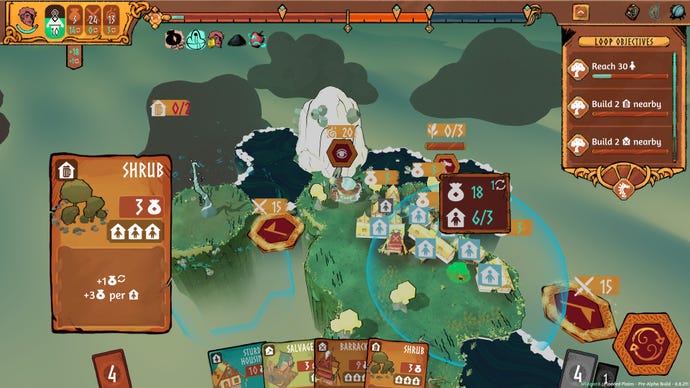
And yes, while you are under a bit of time pressure, the turns themselves last until you hit the big ‘End Turn’ button in the bottom right corner, giving you plenty of headspace to consider your options. That said, there have been a couple of times where I’ve felt some unfair rugpulls during my journey. Not such much from the cards themselves (though I have fallen foul of having too many in my deck at times, which can slow down the frequency of obtaining particular cards), but from the way Roots Of Yggdrasil’s procedurally generated islands sometimes handle their exploration. For instance, I’ll be quite merrily making progress toward a particular Yggdrasil root, spending my Might on the special scouting tiles that are seemingly heading in the root’s direction, only to find the actual route to that, err, root, starts somewhere completely unexpected.
In its defence, most of the time it’s reasonably obvious which scout tiles will take you to which root. But the biggest kick in the teeth for me came when I landed on a big rocky Dwarven stronghold map, with two trees lying ahead to my right and a third right in front of me behind a big gate. I didn’t have the right cards to make the gate open, but no problem, I thought, I only need to reach two roots in this level, so I’ll go after the other ones. Exploration takes time, you see, and you’ll often need to wait two or three turns for paths to open up. So I make pump my points into the one that looks to be heading toward both, only to effectively run out of track after reaching the first one. As it turns out, the requisite exploration tile to reach the other tree a literal stone’s throw away from me was actuallybehindmy starting settlement, with a whole other snakey bit of land bobbing up from beneath the clouds when I eventually unlocked it.
The different biomes you’ll encounter in Roots Of Yggdrasil all look absolutely gorgeous, though they do also come with their own unique challenges, too. Dwarven maps are very rock/mining heavy, for example, leaving your logging cards a bit redunant, while others are all trees, all the time. |Image credit:Rock Paper Shotgun/ManaVoid Entertainment
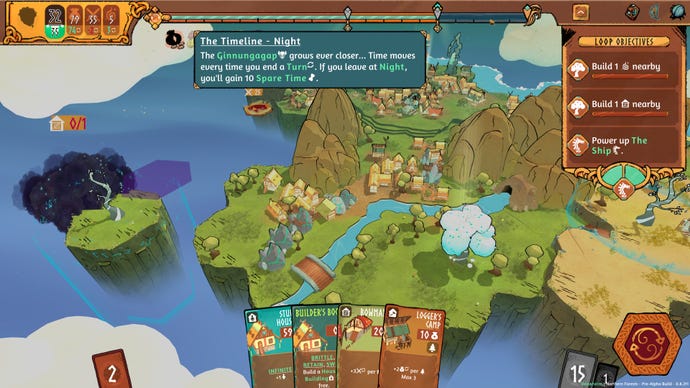
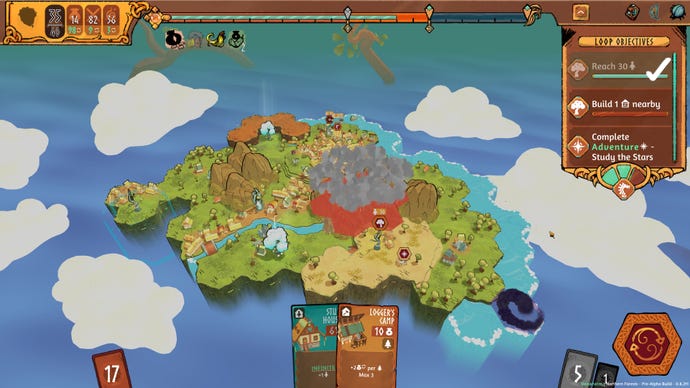
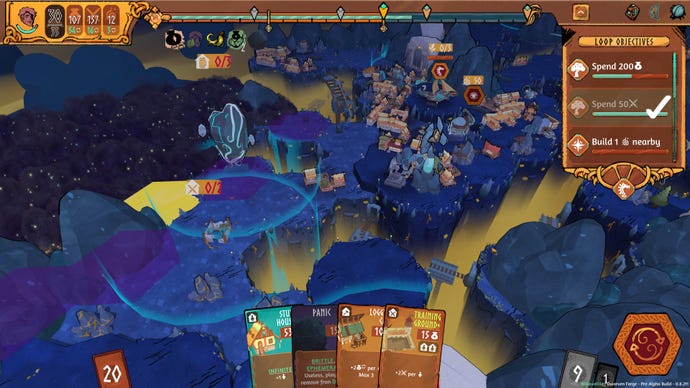
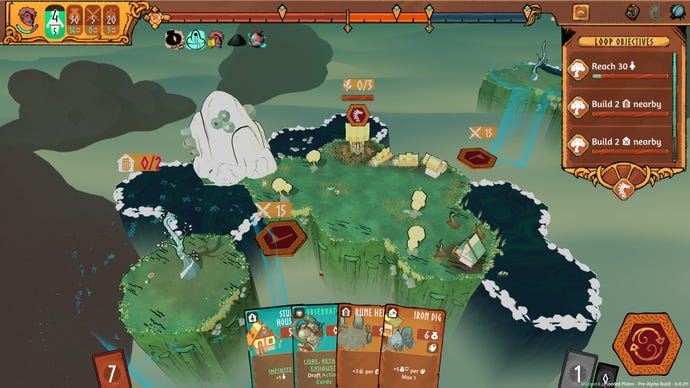
Part of this, I’ll admit, is my own fault. I should have been more proactive with building up my Might and exploring multiple routes simultaneously. But when the procedural nature of its map become more difficult to predict and strategise against, there’s an inevitable friction that occurs that can really end up souring a particular run. And yes, I did die on that Dwarven stronghold, and I wasn’t able to mind “The Gap”.
Still, it’s not like this has happened so often that I’d consider it a major problem or anything - such is the nature of roguelikes and all that - and I have every hope that its stint in early access will help iron out some of these procedural kinks over time. Developers ManaVoid Entertainment estimate they’ll spend around six months in early access at time of writing, putting it roughly in a late June, early July kind of timeframe for a full release, but this may change depending on player feedback, they say. Even so, what’s here is already eminently playable, and I’m looking forward to spending more time with it over the coming weeks and months.